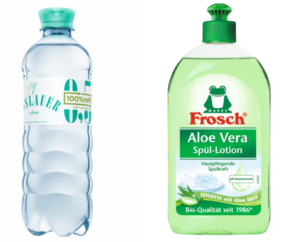

Using project management principles to deal with current topics in the plastic packaging industry. Who needs resource management? We all know that in order to mould bottles, fabricate a capping machine or developing a new platform, an input of certain materials, people and equipment is required. So what exactly is resource management and why do we need to take care of our resources?

The definition of a resource according to the Project Management Body of Knowledge is “Skilled human resource (specific disciplines either individually or in crews or teams), equipment, services, supplies, commodities, material, budgets, or funds“ (p. 446 PMBOK® Guide Fourth Edition, PMI, 2008). Generally speaking, resources are everything which is necessary to generate our projects, products or services. And most importantly, resources are restricted regarding their number, size and availability. They are not available to us in an unlimited amount, therefore we need to use them mindfully. Regardless if human resources, water, energy or PET material are needed as components for your product, it is important that these resources are managed accordingly.
RESOURCE MANAGEMENT IN THIS INSTANCE MEANS:
- to ensure that resources are available during the time that they are required, e.g. the labour input and the equipment for building a new bottle cleansing area.
- to maintain the expected revenue vs. expense ratio, therefore making certain that the utilized resources are not too costly.
- to use all resources sustainably, so that even after the project is completed and e.g. the new sports cap has successfully been launched, the items required for the manufacturing process are still existent to a certain extent and not diminished to an unhealthy level.
- to deploy the right resources at the right time during the project.
Resource management does not only include labour resources, such as individual people, teams or departments, but also extents to material, i.e. sourcing and processing different types of components, and equipment, such as machines, robots or test areas. The difference between a material and an equipment resource is that the material resource is consumed during the creation of the product, the equipment resource can be reused, over a certain period of time, for multiple projects. Currently there is large awareness on how to deal with material resources in relation to reducing input, reusing and recycling items or parts of them. Ideas range from having regulations of a certain amount of recycled plastic in bottles, to producing new products completely made from recycled materials. A lot of ongoing campaigns and up to date organisations look after this topic of sustainability which is making steady progress over the last couple of years, helping to reduce companies’ ecological footprint. Nevertheless, environmentalists argue that responsible enterprises could have increased the ratio of recycled and reused materials to a larger scale a long time ago but are holding back because of commercial reasons. They fear that consumers might reject the newly designed products due to e.g. a slightly different colour of bottles. Educating people, addressing consumer concerns and deepening awareness of how to sensibly deal with our limited resources both on the supplier and the consumer side, is key to ensure successful resource management.
As mentioned above we are used by now to look after our material resources, a discussion which we are also reminded about by regular media coverage. Caring for and supervising our human resources is a topic which is not as popular but should nevertheless be part of professional resource management. The aim is to get the most value out of our specialists, teams and workers in a sustainable way that is healthy for both the company and the labour resources. Understanding needs to be increased that if people are treated well, feel looked after and are challenged to the right degree, they are able to perform at their highest level, therefore giving their best input towards the business. All our resources are limited and consequently we have to manage each individual cautiously to ensure longterm personal and economic success.

The detail and the depth into which resource management should be performed though is subject to an ongoing dispute in the discipline of project management. Some say that it is sufficient to have a rough idea for example of how many labour days, tons of colouring agent or litres of water are available in total for the overall project. Others argue that it is crucial to have a detailed plan of how man-hours are needed on a daily basis, how many grams of pellets are being used each week and that the energy consumption of the packaging system is tracked monthly. Fortunately, there is no right or wrong level of performing resource management. Each company, each department and even each project and product must find its own appropriate degree of how much is feasible to plan and track in relation to resources.
The comPETence center provides your organisation with a dynamic, cost effective way to promote your products and services.

magazine
Find our premium articles, interviews, reports and more
in 3 issues in 2025.





